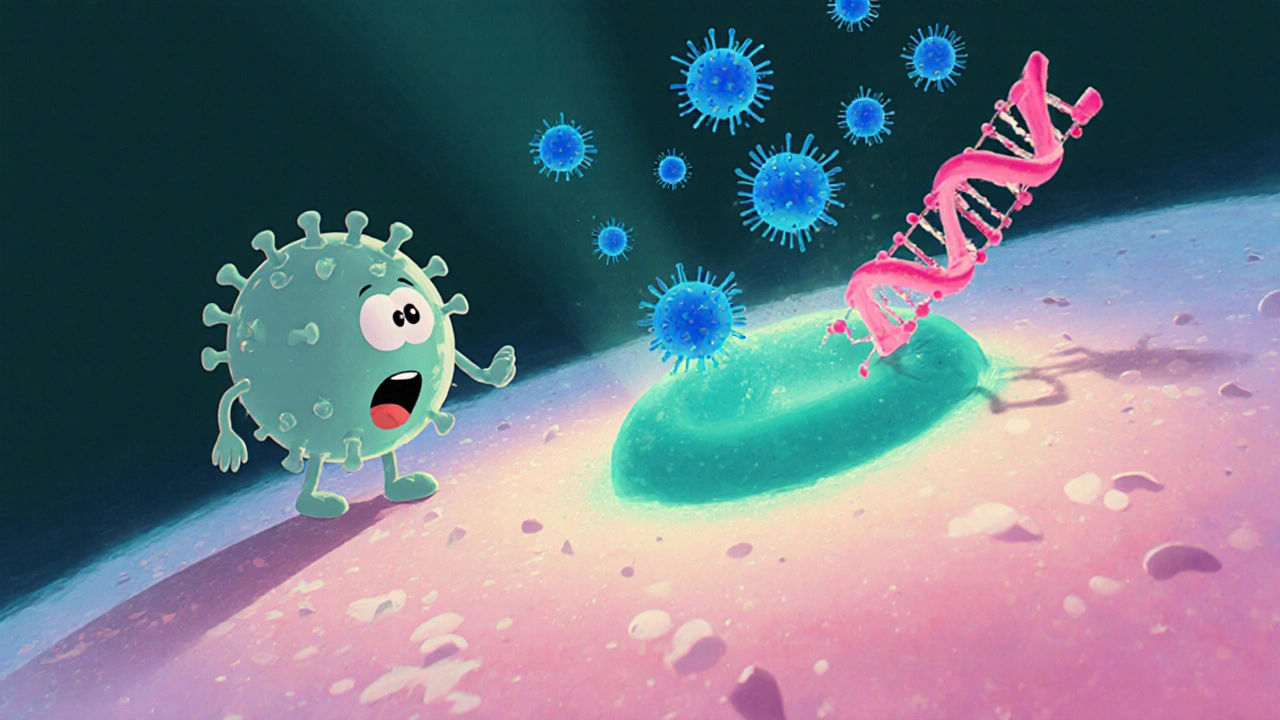Valacyclovir – What It Is, How It Works, and What to Know
When dealing with viral outbreaks, valacyclovir, a prodrug that turns into acyclovir once absorbed, is commonly prescribed for cold sores, genital herpes, and shingles. Also known as Valtrex, it offers a convenient dosing schedule compared with its parent drug. Herpes simplex virus, the virus responsible for oral and genital lesions, triggers painful breakouts that can recur many times a year, is one of the main targets of this medication. Because valacyclovir is converted to acyclovir, a well‑studied antiviral that blocks viral DNA replication, the two drugs share a mechanism while differing in how long they stay active in the bloodstream. Understanding these relationships helps you see why valacyclovir is often preferred for once‑daily or twice‑daily regimens and how it fits into a broader antiviral strategy.
Key Points to Keep in Mind
Valacyclovir encompasses three major therapeutic areas: treating initial herpes episodes, suppressing recurrent outbreaks, and shortening the healing time of shingles. The drug’s high bioavailability (about 55%‑70% compared with acyclovir’s 15%‑30%) means you need fewer pills for the same effect, which improves adherence. Typical adult dosing ranges from 500 mg twice daily for genital herpes suppression to 1 g three times a day for an acute shingles flare‑up. Side effects are usually mild—headache, nausea, or occasional kidney irritation—and they often resolve when the course is finished. However, if you have existing kidney disease, your doctor may lower the dose or monitor kidney function closely because the drug is excreted unchanged by the kidneys.Valacyclovir also interacts with other medications that affect kidney clearance, such as probenecid or certain HIV antivirals, so it’s crucial to share your full medication list with your pharmacist. In addition, the drug should be taken with plenty of water to reduce the risk of crystalluria, a rare condition where drug crystals form in the urinary tract.
Beyond the core facts, the collection of articles below dives deeper into how valacyclovir compares with other antivirals, what safety precautions you need to consider, and how drug compounding services can tailor doses for special cases. You’ll find side‑by‑side comparisons, patient guides, and practical tips that help you decide when to start treatment, how long to stay on suppressive therapy, and what lifestyle factors can boost the medication’s effectiveness. Whether you’re looking for a quick rundown on dosage or a detailed safety checklist, the posts ahead give you actionable insight you can use right away.

- 12 Comments
A detailed, side‑by‑side comparison of Aciclovir with Valacyclovir, Famciclovir, penciclovir and docosanol, covering usage, dosing, safety and how to pick the right antiviral.
